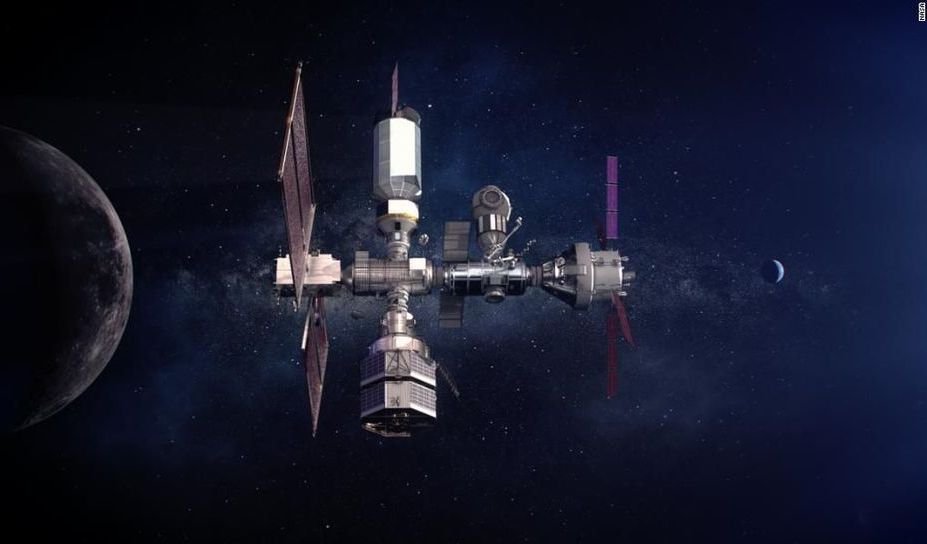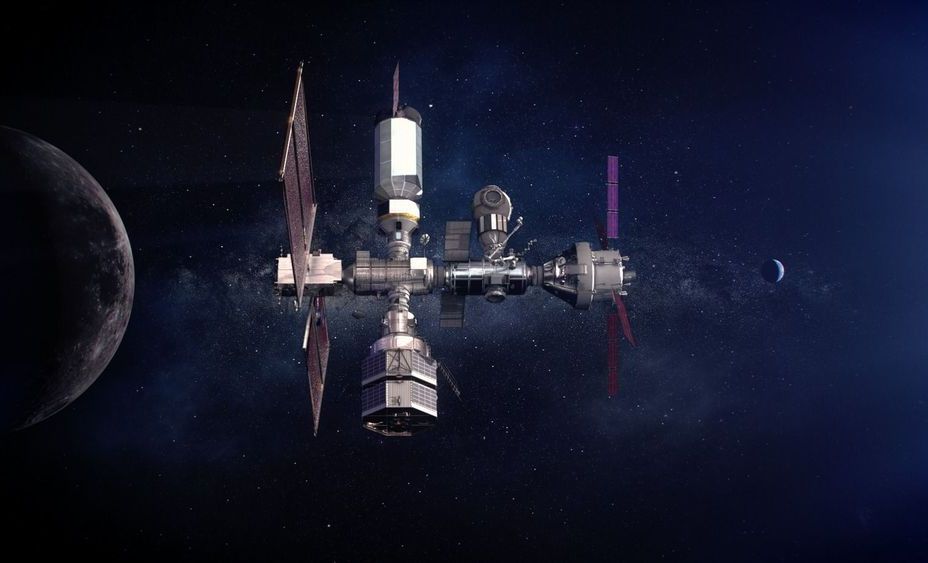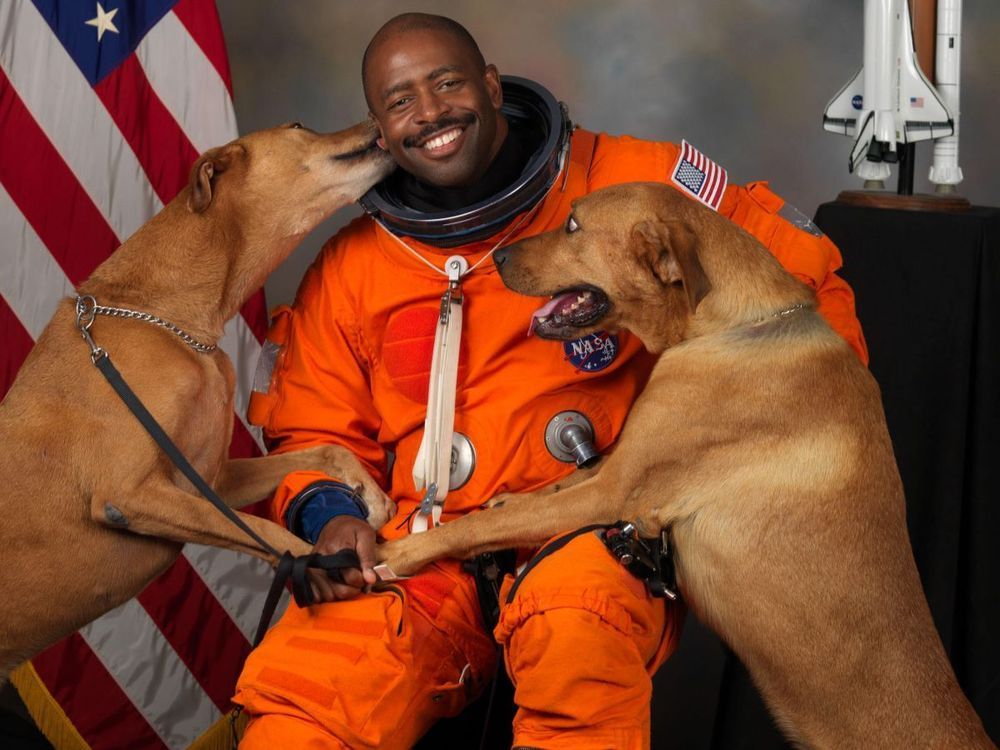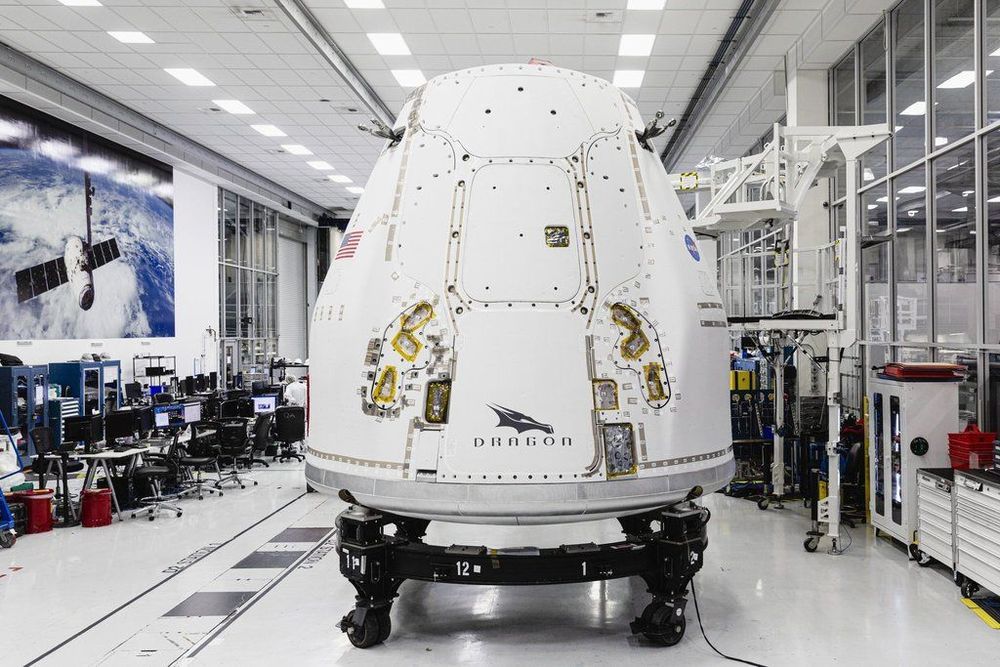NASA and the European Space Agency agreed on Tuesday to work together on the Artemis Gateway lunar outpost. The Artemis Gateway will act as a way station serving astronauts traveling from Earth before they reach the surface of the moon.




« Today we announced the first in a series of upcoming commitments from our international partners to support our Artemis plans. NASA and the European Space Agency (ESA) have signed an agreement committing our space agencies to building the Gateway together. As our outpost in lunar orbit, the Gateway is critical for sustainable exploration of the Moon as well as testing systems and operations for future missions to Mars.
With this Memorandum of Understanding, ESA will provide an additional habitation element, enhanced lunar communications, and a refueling capability to the Gateway later this decade. They will also provide two more European service modules for future Orion spacecraft.
We are honored by this agreement with ESA and, again, it is one of several to come with our international partners. Exploration requires more than hardware though – and that is why this commitment with ESA includes opportunities for European astronauts to fly with NASA astronauts on future Artemis missions to the Gateway. »


SpaceX is preparing an upgraded cargo Dragon capsule for NASA’s next resupply mission to the International Space Station (ISS). It will be SpaceX’s 21st cargo mission under the agency’s second Commercial Resupply Services contract to deliver equipment and supplies needed to perform science research at the orbiting laboratory.
SpaceX has completed 20 cargo Dragon missions to and from the space station. The company has delivered over 95,000 pounds of supplies and returned 75,000 pounds. “Cargo resupply from U.S. companies ensures a national capability to deliver critical science research to the space station, significantly increasing NASA’s ability to conduct new investigations at the only laboratory in space,” the agency wrote in a press release.
The mission will be the first resupply mission that will utilize SpaceX’s upgraded version of the cargo Dragon capsule, that is capable of carrying 50% more payload mass. This week NASA announced it targets to conduct the mission no earlier than December. A Falcon 9 rocket carrying Dragon will liftoff from Launch Complex 39A at NASA’s Kennedy Space Center in Florida.

#NASA has selected Intuitive Machines to deliver the #polar Resources #IceMining Experiment (PRIME-1) #drill, combined with a mass spectrometer, to the #Moon by December 2022.
The ice drilling #mission is the Houston-based company’s second Moon contract award under NASA’s Commercial Lunar Payload Services (CLPS) initiative.
#space #spaceexploration #spaceindustry #newspace #spaceeconomy #spacetechnology #spacesector #Spacemining
NASA has tapped the Houston-based company Intuitive Machines to land an ice-mining drill on the south pole of the moon in 2022.
Under the deal, NASA will pay Intuitive Machines $47 million to deliver the space agency’s Polar Resources Ice Mining Experiment (PRIME-1) to the moon’s south pole. It is the first-ever mission designed to harvest water ice from inside the moon, NASA officials said. Moon ice is a resource NASA hopes to exploit under its Artemis program, which aims to return astronauts to the moon in 2024.
Following the first-ever triple Raptor Static Fire test, Starship SN8 is pushing through the pre-launch milestones. The nosecone has since been installed – resulting in the first full Starship stack since MK1 – allowing for a second Static Fire test this coming week. The second Static Fire test will involve propellant being fed from the Header Tank system.
SN8 passed through the first major objective in impressive fashion, progressing in a staggered manner with a preburner attempt aborted, followed by a preburner test involving at least two of the Raptors.
The following night saw another preburner test, which clearly involved all three Raptors per the visuals, allowing SpaceX to push toward the Static Fire attempt.

SpaceX launched its first crewed mission to ISS in May this year. The company demonstrated its spacecraft is safe and reliable to carry humans to space and back. Axiom’s space tourist mission with SpaceX is scheduled to be a 10-day journey that will launch civilians aboard Crew Dragon to the space station atop a Falcon 9 rocket. The space tourists will stay at ISS for 8 days, where they will experience microgravity and amazing views of our planet.
SpaceX’s first private civilian flight will carry three Axiom customers who will fly alongside former NASA Astronaut Michael Lopez-Alegria, he will be commander during the mission. Earlier this year, NASA and SpaceX announced Hollywood actor Tom Cruise will film a movie at the space station and fly aboard Crew Dragon. Then, reports surfaced about Cruise and his film production agency working with Axiom is responsible for providing ‘training, mission planning, hardware development, life support, medical support, crew provisions, hardware and safety certifications, on-orbit operations and overall mission management.’ However, Axiom has not officially disclosed who their private passengers will be on their first mission in collaboration with SpaceX.

In a recent study of the upper atmosphere of Venus, finding the chemical fingerprint of phosphine has led to speculation that it may be tied to airborne life high in the clouds of our sister planet [1]. We harbour similar suspicion of microbial life on Mars [2], Saturn’s moon Enceledus [3], and Europa, the icy Galilean of the Jovian system [4]. The dwarf planet Ceres of the asteroid belt could be added to that list also, with recent evidence of oceanic water [5], while more exotic variations of life may exist on Titan, which is known to be teeming with organic materials [6]. Should we be more wary of our Solar System as an environment to explore, and the potential of pathogens we may encounter?
If one rewinds 500 years, to when exploration of new worlds involved sailing the oceans, the discovery of the Americas introduced viruses which decimated the native population at that time [7]. That in itself was far from a unique event in history, of course. There have been many occurrences throughout history where travel between distant lands has resulted in the introduction of devastating plagues to one population or the other — not least the Black Death, which arrived in Europe from commercial travel with Asia in the 1300s [8]. Meanwhile, 2020 has reminded us how a novel virus can prove virtually unstoppable from spreading worldwide in a matter of months and reaching pandemic level, once introduced to our now interconnected world [9].
Indeed when the first astronauts returned from the Moon in the 60s, they had to undergo weeks of quarantine as a precaution against introducing a lunar pathogen to Earth [10]. We now know the Moon to be a sterile world, but this should not give us a false sense of security when visiting and returning from other worlds, which are far more likely to harbour microbial life. It is quite plausible to consider that any microbes which have evolved to survive in the harsh environments on other worlds could multiply out of control if introduced to a more fertile environment on Earth. The likelihood of any such foreign microbes being capable of becoming infectious pathogens to our species is difficult to measure, but one could still cause problems regardless, by undermining Earth’s ecosystem in competing with native microbial life as a runaway invasive species.
Fortunately, due to the vast distances involved in inter-planetary travel, returning astronauts would likely show symptoms of infection from any dangerous pathogen long before reaching home, as such a journey would be expected to take many months, even with more advanced propulsion technology than we use in space travel today. That is not to say they could not inadvertently return with microbial life on board — or even on the exterior of craft: Earth’s tardigrades, for example, have proven quite durable in journeys into outer space [11].

Seattle-based Ultra Safe Nuclear Technologies (USNC-Tech) has developed a concept for a new Nuclear Thermal Propulsion (NTP) engine and delivered it to NASA. Claimed to be safer and more reliable than previous NTP designs and with far greater efficiency than a chemical rocket, the concept could help realize the goal of using nuclear propulsion to revolutionize deep space travel, reducing Earth-Mars travel time to just three months.
Because chemical rockets are already near their theoretical limits and electric space propulsion systems have such low thrust, rocket engineers continue to seek ways to build more efficient, more powerful engines using some variant of nuclear energy. If properly designed, such nuclear rockets could have several times the efficiency of the chemical variety. The problem is to produce a nuclear reactor that is light enough and safe enough for use outside the Earth’s atmosphere – especially if the spacecraft is carrying a crew.
According to Dr. Michael Eades, principal engineer at USNC-Tech, the new concept engine is more reliable than previous NTP designs and can produce twice the specific impulse of a chemical rocket. Specific impulse is a measure of a rocket’s efficiency.